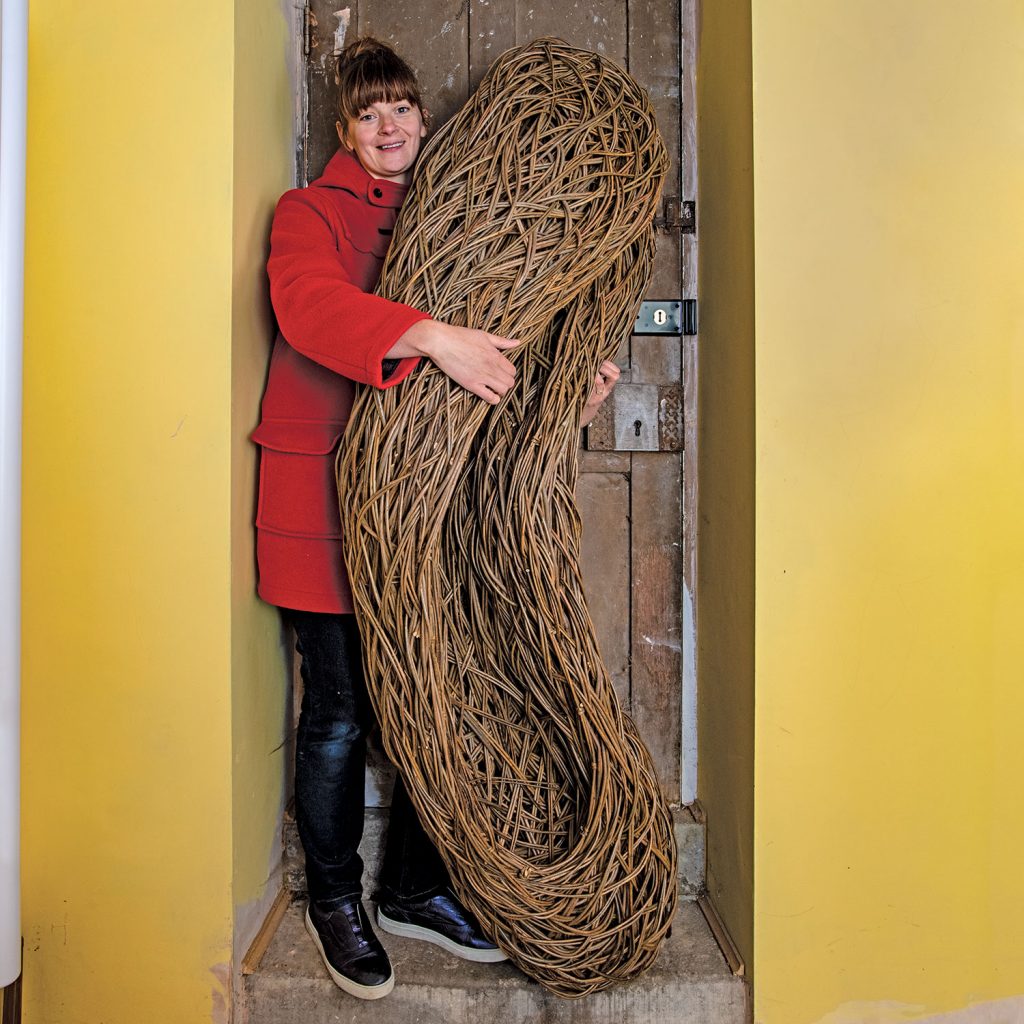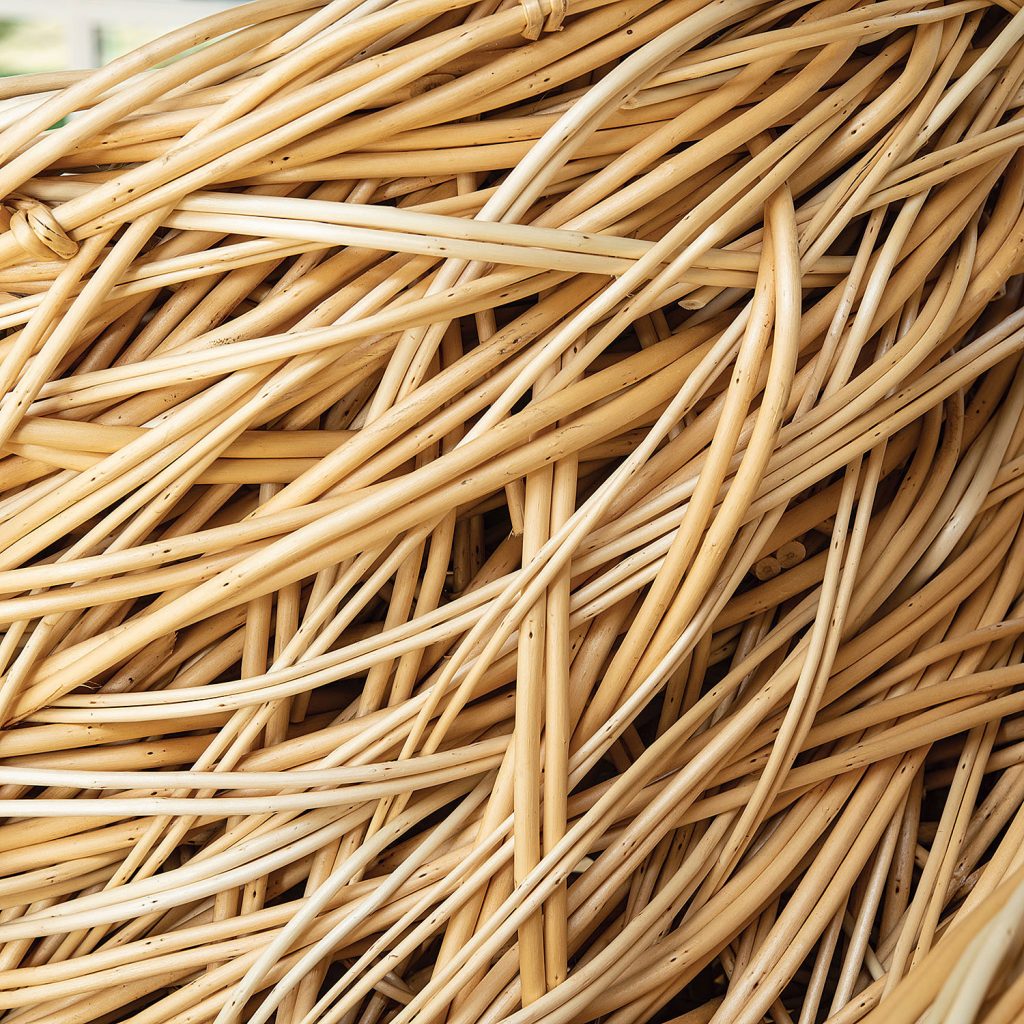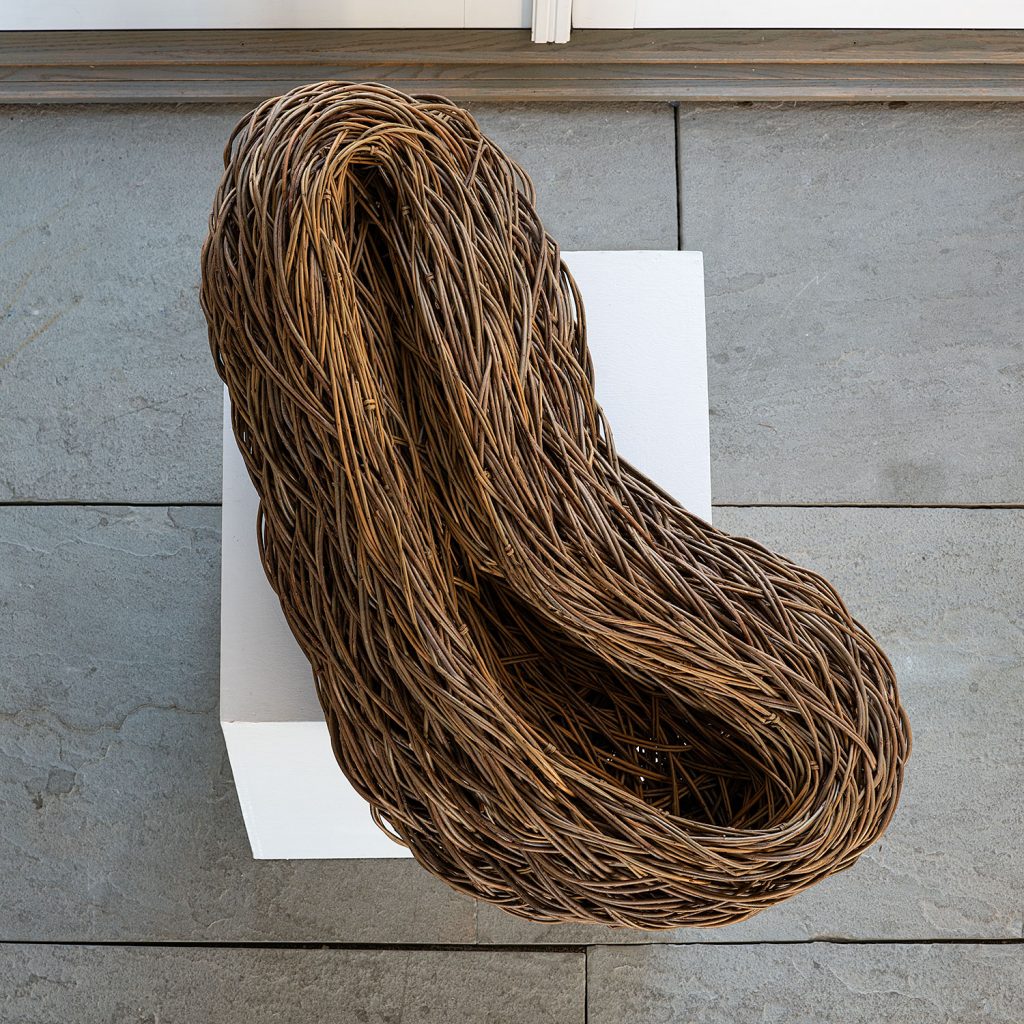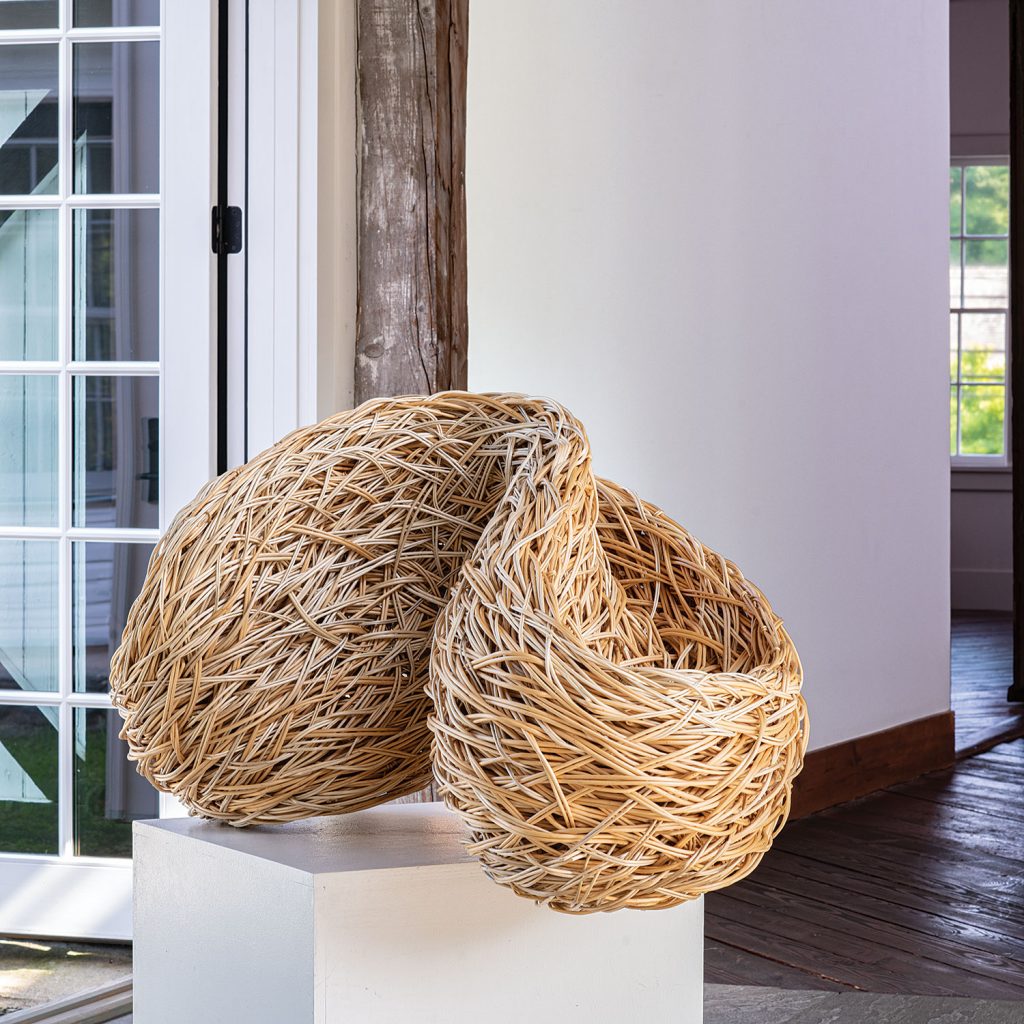Laura Ellen Bacon is a sculptor who works in natural materials en masse. She uses dicky meadows, one of the most popular and desirable basket willows, a variety that is widely distributed throughout Britain and Ireland. Her work has been described as ‘monumental,’ ‘compelling’ and ‘uncanny’.

Her large-scale works have been created in landscape, interior and gallery settings including Saatchi Gallery, Chatsworth, New Art Centre, Somerset House, Sudeley Castle (for Sotheby’s) and Blackwell – The Arts and Crafts House in Cumbria. Bacon describes her organic, site-specific woven sculptures for buildings as “muscular forms” that “nuzzle up to the glass and their gripping weave locks onto the strength of the walls.” “In a truly baroque manner, her monumental installations include curvaceous forms and woven willow forms that resemble a kind of sculpted fabric, which springs from garden walls, hangs on the façade of a building, or billows out from a window ledge,” wrote Jane Milosch, Office of the Under Secretary for History, Art and Culture, Smithsonian, in the exhibition catalog of Green From the Get Go: International Contemporary Basketmakers. Yet, when browngrotta arts visited her studio in the UK we were taken aback by how small it was in contrast to largeness of her works. You can see her here, barely able to fit one of her smaller works through her studio door.

Her goal in creating her evocative work is to bring intrigue into both natural and built environments, creating work that might serve to remind viewers that nature can still surprise. “The ambition in my work is to generate a kind of intrigue and an appeal that touches a powerful nerve (perhaps ancient in its origin) that we cannot precisely locate,” Bacon says. Her work has been driven by a personal and solitary desire to build and shape form with her hands. “The thrill of making an internal space by turning and tying the material into position provokes a strong desire in me to make. My work responds primarily to the structural features of a particular site, in much same way as the questing foot of a Weaver bird might regard the flex of a bough or a colony of wasps might collaborate within the rafters,” she says. “I also respond to the feeling of the site and the opportunity to give the work (and in some way, the host structure) a sense of movement, of slow growth, as if the work will continue to grow when the viewer’s back is turned.”

Poise, 2016, for example, is an enormous basket form that Milosch observes “seems incapable of sitting still. Instead, it is an energetic, woven structure that twists and turns with such energy that is recalls a robust, fleshy Rubenesque female torso.” Surface Form, which was featured in browngrotta arts last exhibition, Volume 50: Chronicling Fiber Art for Three Decades, was originally created for Jerwood Contemporary Makers, a prestigious award, of which she was one of winners who shared the prize. The brief, to all the exhibitors, was to create a work that had to be no more than a meter, and sat upon, or involved itself with, a specific square plinth. In response, Surface Form seems to swallow the edge of the surface.

stripped willow from Somerset, UK, 30” x 45” x 28”, 2010. Photo by Tom Grotta
Bacon’s work has been exhibited or collected by the Holburn Museum, Bath, UK; Ruthin Craft Centre, Wales, UK; The Gallery, Winchester Discovery Center, UK; Blackwell, The Arts and Crafts House, Cumbria;; Derby Museum and Art Gallery; FUMI Gallery, Sardinia, Greece; Sainsbury Centre, Norwich, UK; Solomon Gallery, Dublin, Ireland; Hall Place, Kent, UK; Crafts Council, London, UK; Chatsworth Garden, Derbyshire, UK; Victoria & Albert Museum, London, UK; and the Morris Museum, Morristown, New Jersey.
